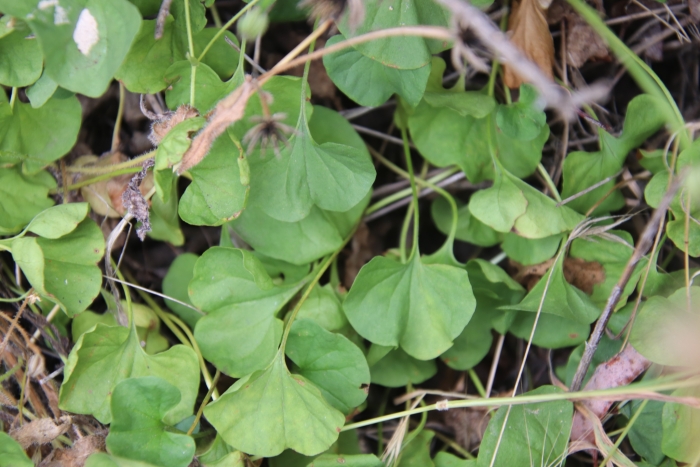Western Ponysfoot
(Dichondra occidentalis)
Western Ponysfoot (Dichondra occidentalis)
/
/

Millie Basden
CC BY 4.0
Image By:
Millie Basden
Recorded By:
Copyright:
CC BY 4.0
Copyright Notice:
Photo by: Millie Basden | License Type: CC BY 4.0 | License URL: http://creativecommons.org/licenses/by/4.0/ | Rights Holder: Millie Basden | Publisher: iNaturalist | Date Created: 2019-06-16T10:56:35-07:00 |


















































Estimated Native Range
Summary
Dichondra occidentalis, commonly known as Western Ponysfoot, is a perennial herb that is deciduous in nature. It is native to California and Baja California, where it thrives in a variety of habitats including chaparral, vernal pools, and grasslands. This ground-hugging plant typically reaches a height of about 0.3 feet (0.09 meters) and can spread 2-3 feet (0.6-0.9 meters) wide, forming a dense mat of foliage. Western Ponysfoot has small, kidney-shaped to nearly round leaves that create a lush carpet of green. It produces inconspicuous cream flowers from late spring to early fall, which are less noticeable compared to its foliage.
Western Ponysfoot is valued for its low-growing habit and is often used as a ground cover in gardens, especially in xeriscaping due to its drought tolerance. It is also suitable for hanging baskets and as a lawn substitute in low foot traffic areas. In cultivation, it prefers full sun to part shade and requires well-drained soil with low water once established. While generally low-maintenance, it can be susceptible to root rot if overwatered. Dichondra occidentalis is not known for aggressive roots or significant disease problems, making it a reliable choice for gardeners seeking a low-care plant.CC BY-SA 4.0
Western Ponysfoot is valued for its low-growing habit and is often used as a ground cover in gardens, especially in xeriscaping due to its drought tolerance. It is also suitable for hanging baskets and as a lawn substitute in low foot traffic areas. In cultivation, it prefers full sun to part shade and requires well-drained soil with low water once established. While generally low-maintenance, it can be susceptible to root rot if overwatered. Dichondra occidentalis is not known for aggressive roots or significant disease problems, making it a reliable choice for gardeners seeking a low-care plant.CC BY-SA 4.0
Plant Description
- Plant Type: Herb
- Height: 0.1-0.3 feet
- Width: 1.5-3 feet
- Growth Rate: Moderate
- Flower Color: Red, Purple
- Flowering Season: Fall, Spring, Summer
- Leaf Retention: Deciduous
Growth Requirements
- Sun: Full Sun, Part Shade
- Water: Low
- Drainage: Medium, Fast
Common Uses
Bee Garden, Bird Garden, Butterfly Garden, Deer Resistant, Drought Tolerant, Hummingbird Garden, Low Maintenance, Potted Plant
Natural Habitat
native to California and Baja California, where it thrives in a variety of habitats including chaparral, vernal pools, and grasslands
Other Names
Common Names:
Scientific Names: , Dichondra occidentalis,
GBIF Accepted Name: Dichondra occidentalis House